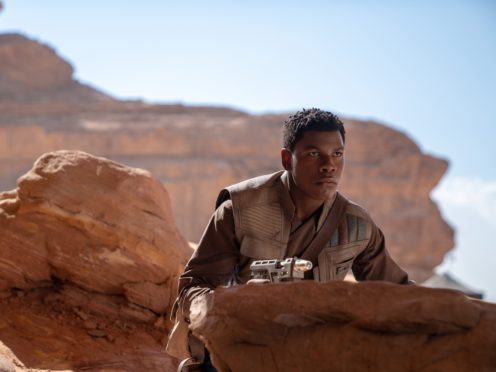Critics have delivered their verdict on Star Wars: The Rise Of Skywalker, with many expressing mixed views on the conclusion to the Skywalker saga started by George Lucas more than 40 years ago.
The JJ Abrams film, which makes history with the first same-sex kiss in the franchise, sees the return of stars Daisy Ridley, John Boyega, Adam Driver and Oscar Isaac, as well as Billy Dee Williams, reprising his role as Lando Calrissian for the first time since 1983’s Return Of The Jedi.
Meanwhile, Ian McDiarmid is also back as Emperor Palpatine, who is determined to kill Ridley’s Rey.
The Guardian wrote: “Given that there is no possible way of pleasing all the people even half the time when it comes to Star Wars, the good news is, The Rise Of Skywalker is the send-off the saga deserves.
“The bad news is, it is largely the send-off we expected. Of course there is epic action to savour and surprises and spoilers to spill, but given the long, long build-up, some of the saga’s big revelations and developments might be a little unsatisfying on reflection.”
Star Wars: The Rise of Skywalker review – death is not the end in new trilogy's laborious exit https://t.co/wJNBbyyEuY
— The Guardian (@guardian) December 18, 2019
Film magazine Empire said: “For all the visual panache, pleasing cameos and interesting newcomers here, for all that Ridley and Driver pour into their stand-offs, the Emperor’s presence shows a disturbing lack of faith at the heart of Rise Of Skywalker.
“The fan backlash last time has been taken on board too well; the storytelling here sputters whenever it approaches any similar chance to turn away from narrative convention and do something truly unexpected.
“You wish that this galaxy didn’t feel so small and scared of stepping away from George Lucas’ shadow.”
The Skywalker Saga ends. Read Empire's review of #StarWars: #TheRiseOfSkywalker: https://t.co/aG8pppFMCY pic.twitter.com/cBvpM090oG
— Empire Magazine (@empiremagazine) December 18, 2019
US trade publication Variety described the film as “a puckish and engrossing movie, fulsome but light on its rocket feet”.
It adds: “At two hours and 28 minutes, is it too long? Yes. Does it feature several dead characters coming all too conveniently back to life? Yes. (Actual dialogue: “Somehow, Palpatine returned.” “Wait, do we believe this?” And no, that’s not a spoiler. It’s revealed in the opening 20 minutes.)
“If you look past its foibles, though, The Rise of Skywalker has been directed, by JJ Abrams (the script is by Abrams and Chris Terrio), with much the same neo-classic-Lucas precision and crispness and verve that he brought to The Force Awakens, though in this case with less of the lockstep nostalgia that made that film such a direct clone of the first Star Wars that the thrill of going back to 1977 was mitigated by the fact that the entire thing had been transparently engineered to give you that feeling.
‘Star Wars: The Rise of Skywalker’: Film Review https://t.co/QjDj1S8HmR
— Variety (@Variety) December 18, 2019
“It was like a pharmaceutical drug called Starzac.”
The Hollywood Reporter wrote: “On a popular level, it succeeds in a way that good escapist fiction always has, by transporting you completely to a fabulous foreign realm unvisitable by any other means.
“No one who has seen the preceding VIII chapters will dare miss this concluding instalment, which means that the vast majority of the known movie-going world will turn up. And in theatres, no less.
“But there are nagging problems that, while evident in the previous two entries, have become more pronounced now.”
